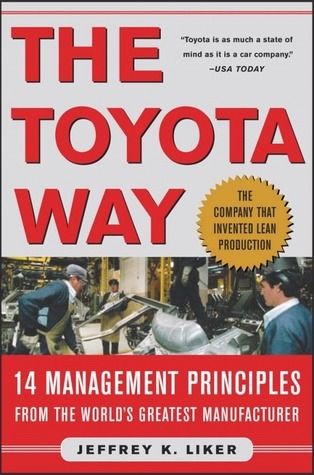The Toyota Way Summary
3 min read ⌚
 14 Management Principles from the World’s Greatest Manufacturer
14 Management Principles from the World’s Greatest Manufacturer
Find out more about the Toyota’s rise to the top from reliable sources.
About Jeffrey K. Liker
 Jeffrey K. Liker is in charge of the Japan Technology Management Program, and he is also a professor of industrial engineering at the University of Michigan.
Jeffrey K. Liker is in charge of the Japan Technology Management Program, and he is also a professor of industrial engineering at the University of Michigan.
“The Toyota Way PDF Summary”
Jeffrey K. Liker emphasizes fourteen core principles paved with good intentions to shape the Toyota Way. Applying such strategy gave the company the edge to thrive on new possibilities and create real leaders.
According to experts, these 14 altering principles of “The Toyota Way” are challenging the conventional management methods and prompt you to expand your horizons.
Adopt an out-of-the-box mindset and use these proven laws to achieve victory in the market:
- Apply a long-term philosophy — Short-oriented companies are not aware that their shallow perspective will stumble and destroy them. Designing a long-term strategy is key to remain competitive even when you are trailing behind your competitors in terms of finance.
- Create continuous flow — Don’t hide the issues underneath the carpet. Bring them to surface so that you can maintain a constant flow, absent obstructions. Follow one tempo because you don’t want to risk shutting down of the production lines.
- Use ‘pull’ systems and avoid overproduction — A push system is mainly concerned about transferring all the products onto a retailer, regardless of whether it’s beneficial. A pull system is more reliable because it provides the retailer with a specific line of products.
- Level the workload — The Japanese management stands out from the rest for many reasons. One of them is leveling the workload also known as “heijunka.” Production levels must match the needs, and in such situation, the pace of production must remain stable and balanced.
- Build the right culture — The correct culture takes good care of everyone involved in the process – all stakeholders. Fixing internal issues with transparency is the only way to stop quality reduction.
- Standardize tasks — Employees don’t prefer too many changes, so keep things consistent and try to avoid frequent modifications. Standardization minimizes defects and makes things go smoothly.
- Use visual control — Some goods are jammed with various types of inventory, which actually hinders the actual outlook. Manage the processes and stay on track.
- Use only tested technology — Toyota, unlike other vehicle manufacturers, doesn’t like to try out new technologies. Instead, it prefers proven cutting-edge capabilities that are generating positive results.
- Grow leaders who live the philosophy — Executives and other departmental managers must not allow their ego to stand in the way of mutual growth and progress. Serving the organization’s interest means to focus on customers by incorporating various ideas coming from all members that match the TPS philosophy.
- Develop people and teams — Evidently, great personnel makes an even better group or organization. Stimulate group cohesion by showing respect and appreciation for everyone’s work. Teamwork is vital for following the corporate vision.
- Respect your extended network — Truly, every company finds strength in the links it has with its trusted partners and suppliers. Help your associates, motivate them to improve and build a long-term partnership.
- Observe the source — The power of observation is used in various fields. Toyota executives, frequently observe the business processes until they get the big picture, “why, how, and what.”
- Decide slowly, implement rapidly — A well-organized company doesn’t rush to conclusions. Taking time and analyzing all options is what makes them so great.
- Practice relentless reflection — Relentless reflection, also known as “hansei,” often leads to kaizen or never-ending improvement.
Continuous reflection means being focused on enforcing root-cause analysis to see what the problem is and afterward implement a solution.
Like this summary? We’d Like to invite you to download our free 12 min app, for more amazing summaries and audiobooks.
“The Toyota Way Quotes”
Toyota’s success derives from balancing the role of people in an organizational culture that expects and values their continuous improvements, with a technical system focused on high-value-added flow. Share on X Toyota designed autos faster, with more reliability, yet at a competitive cost, even when paying the relatively high wages of Japanese workers. Share on X In the Toyota Way, it’s the people who bring the system to life: working, communicating, resolving issues and growing together. Share on X Of all the institutions I’ve studied or worked for, including world-class companies and major universities, I believe Toyota is the best learning organization. Share on X Service processes are often complex and involve hundreds or thousands of activities. If you try to map everything all at once, it leads to a mess. Share on X
Emir is the Head of Marketing at 12min. In his spare time, he loves to meditate and play soccer.


 14 Management Principles from the World’s Greatest Manufacturer
14 Management Principles from the World’s Greatest Manufacturer



